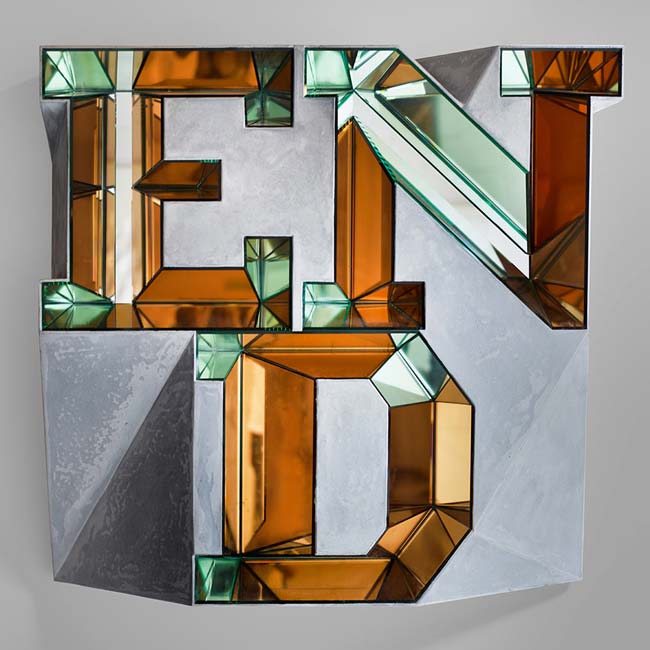Symposium Stockholm 2016: Doug Aitken
We speak to the artist about technology, social media and art, and where they all meet


This past weekend saw the tech-savvy city of Stockholm host the second edition of Symposium Stockholm, a “festival of ideas” started by Spotify’s Daniel Ek and founder of At Night Management, Ash Pournouri. As part of the Symposium, the two-day Brilliant Minds conference gathered entrepreneurs, artists and tech creatives to talk about collaborative creativity. Among the speakers were Cool Hunting favorite Doug Aitken, whose work includes “Station to Station,” the film of which was released on iTunes earlier this year. We sat down with the multimedia artist to talk about the merging of art and technology, the power of mythology and his upcoming MOCA show.
How important is technology to your art—is it something you take into consideration when you create your work?
I try to use technology in a way that’s intuitive, and I think it’s always driven by the concept; the concept is the language. The language creates its own directions, its own paths. Every project is different, it’s like a tree system with different branches. There are pieces that use technology—for example, at Seattle Art Museum there’s an entire facade that can sense the viewer. It’s basically a living artwork. It can sense if there’s one person standing there at midnight and if they walk away, the building will change and evolve according to it. It’s one of the things I’m very interested in, this idea that art can become a living system, that an artwork can be something that is changing continuously. I think that’s an early, very interesting area that we can work with now, and one that is a little bit different to the tools we’ve had in the past. So those ideas for me validate technology, they become more interesting, as opposed to something which is just a Disneyfication.

Do you find, when there’s new technology coming out, that you’re quite keen to incorporate it into your art?
It’s not so much that you’re looking at what’s coming out, more that ideas and concepts evolve organically. And, often times, you might have a project you’re working on for several years, until it reaches a point where it kind of goes over the cliff and into some other place. I think the process is very organic, and if you look at technology in a way that’s also organic, it’s a little bit different than the view of it as this hard, cold, machine-driven thing. I believe there’s a lot of room for many subtleties.
For your collaborative projects, is modern technology a good way to find collaborators globally and for people to see the finished pieces?
In the talk right now, I was mentioning how something like Instagram doesn’t need to be a documenting tool. In London (at the Station to Station happening at the Barbican) last summer, we produced a 15-second Instagram film every day of everything that happened that day, and it eventually became a larger, seven-minute film. It was almost like a drip; you were able to make this time-based thing, where after a week you have several minutes that keep growing, so in a sense you have a living film. It’s also a way to project these ideas and concepts, by many different people, into the world. And I think when (technology) is seen like that, it’s a different perspective. Much of what we hear being discussed is just hardcore capitalism and how to use the digital landscape to exploit, and that’s unfortunate, that it so often has to be capitalism that innovates.

Would you agree that social media artworks feel less permanent?
That’s OK. When you think about it, some of the most interesting pieces of the twentieth century were performances, happenings, or events. Think of Joseph Beuys’ “I Like America and America Likes Me.” I mean, it’s a seminal work that lasts for a few days and then it’s gone. And a lot of that goes back to the power of mythology—an incredible concept has this friction and energy, and the energy itself creates a story. That story goes viral, whether it’s 200 years ago or 2016.
I’m optimistic about the human condition, the human potential. I’m kind of neutral on technology, I feel like it’s up to us.
I take it that you’re quite optimistic about technology?
I’m optimistic about the human condition, the human potential. I’m kind of neutral on technology, I feel like it’s up to us. We create these things, so our condition and our philosophy will dictate them.
You have a major exhibition opening at MOCA in September, what can we expect to see then?
What we’re trying to do—and it’s a radical departure for a museum—is we’re looking at transforming the museum space into something almost like a film-set, a sound stage, so that the viewer is empowered to explore and navigate on their own, through darkness, and encounter different situations and pieces. There’s some performance art and some physical works, and we’re also doing an artwork that will be under the ocean. It will consist of three enormous kaleidoscopic structures that create ecosystems. You’ll have to swim into them.
Discussion images courtesy of Symposium Stockholm, all others courtesy of Doug Aitken












